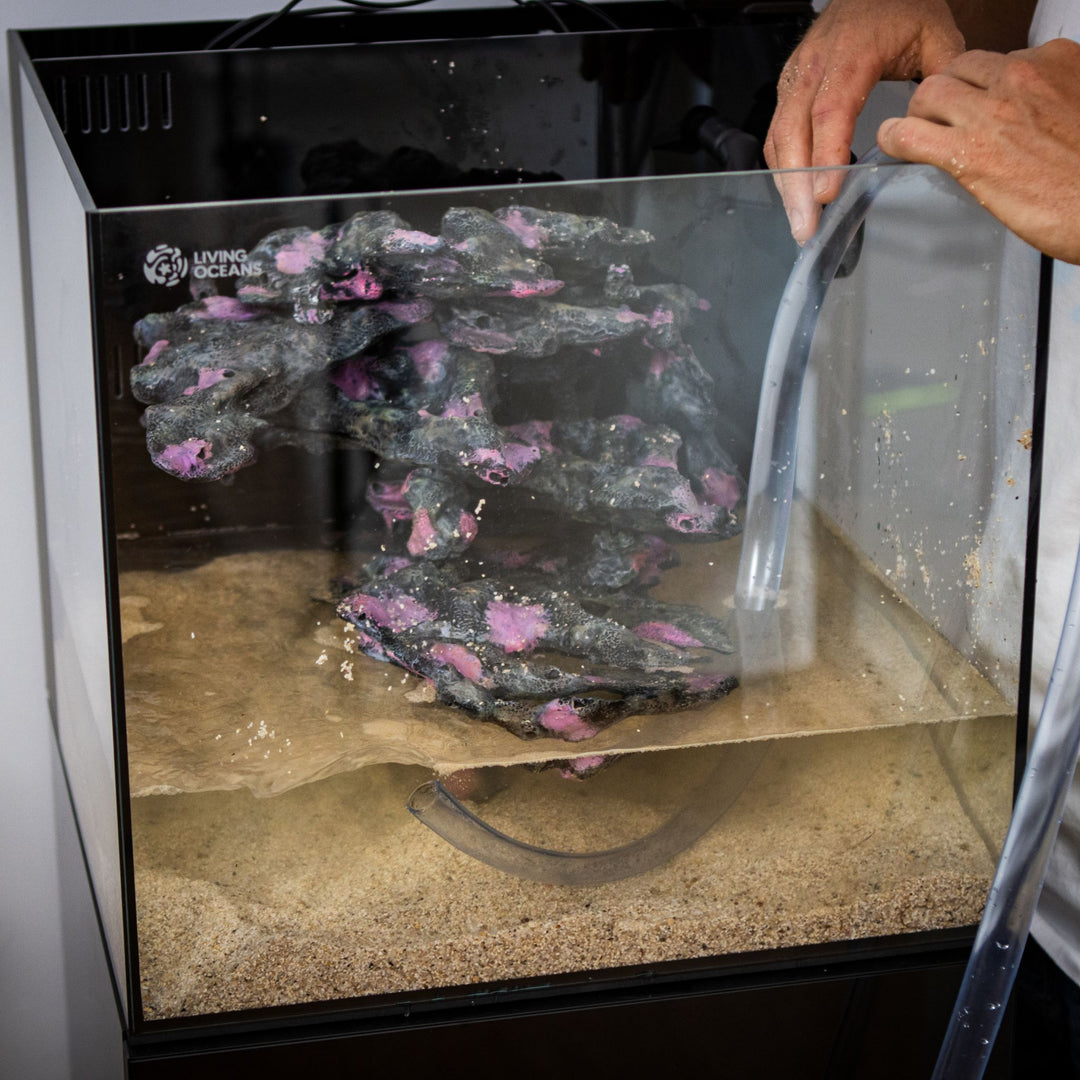Cube 80L Black Edition - In-Stock
CUBE 80L Aquarium:
Crafted from optical glass with high-grade silicone and 45-degree mitre joins for seamless edges and a sleek painted backing. Includes an integrated Filtration Chamber for a clear, unobstructed view of the reef.
Filtration Chamber:
Houses essential equipment, including the heater, pump, auto top-off, and filter boxes, all concealed for a tidy appearance. Optimised for efficient water flow to support nutrient cycling and a stable environment.
Aquarium Cabinet - Black Edition:
Stylish and discreet, with high-grade glass panels and an anodized aluminum frame. Features built-in storage, a dedicated electrical compartment, and integrated cable management for organised equipment and a polished appearance.
Living Blocks Reef:
A modular, customisable reef system that can be moved and removed as a single assembled structure, enhancing both aesthetics and functionality. Designed with dedicated spaces for coral placement, fish exploration, and natural hiding spots.
Sea Water:
Scientifically formulated seawater with a precise balance of trace elements and minerals to support corals, fish, and beneficial bacteria for a thriving ecosystem.
Living Sand:
Engineered for optimal water flow in the filtration chamber, creating a foundation for biological filtration, stable water quality, and a balanced ecosystem.
Included:
- 1 month of Maintenance and Care Subscription including Installation and a Maintenance Service Call
- Cube Aquarium
- Aquarium Cabinet
- Living Blocks Reef
- Living Sand
- Sea Water
- LED Light with autonomous light cycle
- Pump with controllable Surge Flow
- Auto Feeder
- Auto Water Top-Up
- Heater 200W
- Ecosystem Filter Media Mix
- Fish Net
- Ecosystems Top-Up Reservoirs
- Siphon
- Marine Pellets
- Mesh Cover
-
Magnet Cleaner
Aquarium: 45 cm (L) x 45 cm (D) x 40 cm (H)
Total Height (including cabinet and light): 145 cm
Water Volume: approx. 80l
Empty Weight: approx. 72 kg
Capacity: Comfortably houses a family of 4 clownfish and 30 corals
- Delivery Available Around Perth
- Cube 80L in-stock ready for delivery| Cube 130L pre-order for May delivery
3 Easy Steps to Build and Buy Your Aquarium
- STEP 1 - Select the aquarium size
- STEP 2 - Adopt your Fish Buddies
- STEP 3 - Pick your Coral Crew
Aquarium Dimensions
| Cube 80l | Cube 130l |
|
|
Component Listing
|
CUBE 80L or 130L Aquarium
Crafted from optical glass with high-grade silicone and 45-degree mitre joins for seamless edges and a sleek painted backing. Includes an integrated Filtration Chamber for a clear, unobstructed view of the reef.
Filtration Chamber
Houses essential equipment, including the heater, pump, auto top-off, and filter boxes, all concealed for a tidy appearance. Optimised for efficient water flow to support nutrient cycling and a stable environment.
Aquarium Cabinet
Stylish and discreet, with high-grade glass panels and an anodized aluminum frame. Features built-in storage, a dedicated electrical compartment, and integrated cable management for organised equipment and a polished appearance.
Living Blocks Reef
A modular, customisable reef system that can be moved and removed as a single assembled structure, enhancing both aesthetics and functionality. Designed with dedicated spaces for coral placement, fish exploration, and natural hiding spots.
Sea Water
Scientifically formulated seawater with a precise balance of trace elements and minerals to support corals, fish, and beneficial bacteria for a thriving ecosystem.
Living Sand
Engineered for optimal water flow in the filtration chamber, creating a foundation for biological filtration, stable water quality, and a balanced ecosystem.
Includes Nemo Clownfish, Dottybacks, and a selection of hardy corals chosen for compatibility and resilience, supporting a balanced and thriving ecosystem.
Your Living Ecosystem Aquarium purchase includes access to our Membership Portal, where you can manage your aquarium data and purchase history, access the Training Academy, schedule your installation date, and purchase member-only products like fish, corals, accessories, and tailored subscription services for ongoing maintenance and support.
Our Maintenance and Care Subscription option provides ongoing support, managing water testing, water changes, and ensuring a thriving marine ecosystem. This includes quarterly professional maintenance visits, on-call assistance, and the Extra Care Warranty for added protection.
We back our customers with warranties for peace of mind. Terms and Conditions apply.
Equipment Warranty
All equipment is covered by a 12-month Equipment Warranty, with repairs or replacements for faulty items as outlined in the Terms and Conditions.
Livestock Warranty
All livestock purchases come with a 14-day replacement or money-back Livestock Warranty, subject to the Terms and Conditions.
Extra Care Warranty
The Extra Care Warranty provides comprehensive support to restore your aquarium in the event of a complete ecosystem loss. This includes replacement of Living Blocks reef, bio-active sand, sea water, and livestock limited to a standard configuration of clownfish and a Coral Pack. A $200 excess applies to claims, as specified in the Terms and Conditions. Available with the Maintenance and Care Subscription.
Prior to delivery, all new members who purchase the Living Ecosystem Aquarium must complete basic online training modules in the Membership Academy to ensure the safety and well-being of the livestock. Access to the training modules will be provided via email after purchase.
The fully established aquarium is delivered and professionally installed in one site visit at no extra charge. A delivery date can be scheduled using our booking system once online training is completed, ensuring everything is set up for a healthy and thriving aquarium.
We are currently delivering to the Perth metropolitan region.
Terms and Conditions





















